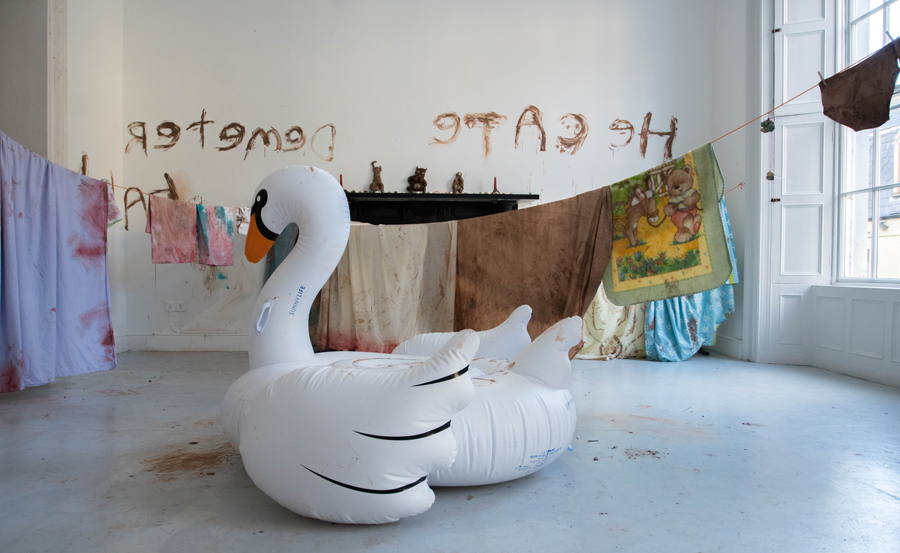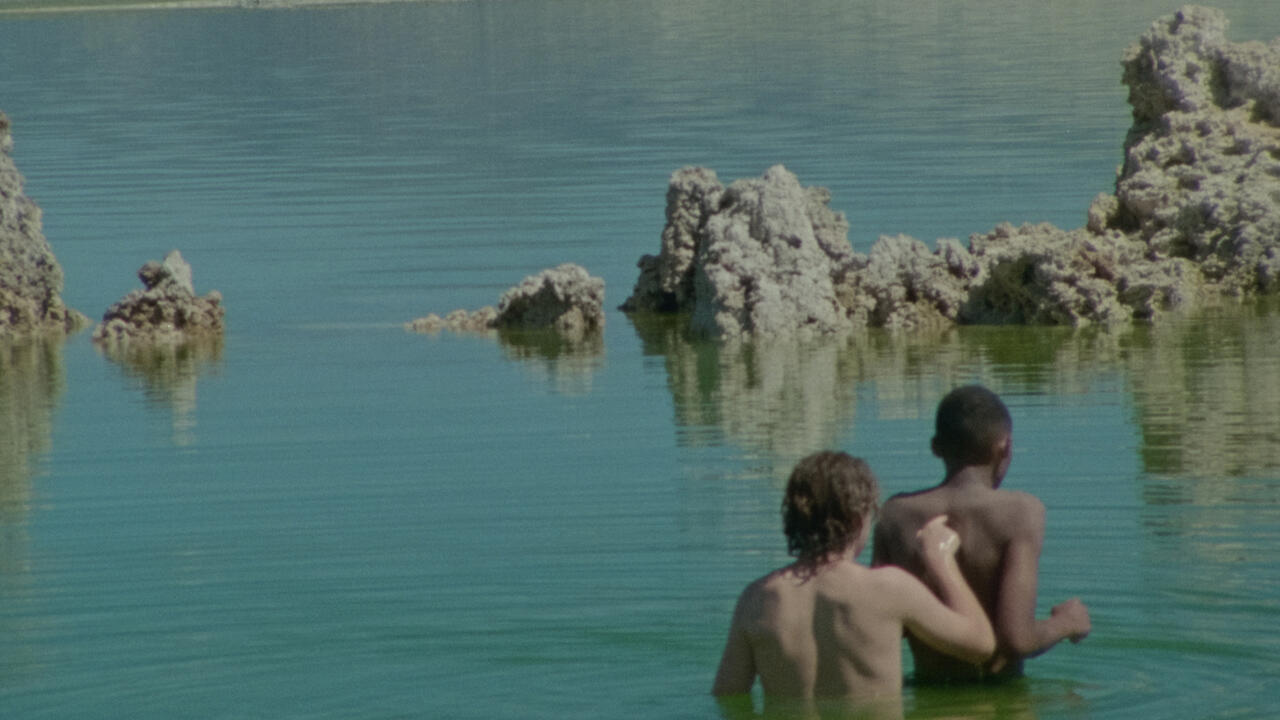They Call Us The Screamers
The Tulca Festival 2017 finds inspiration in a ragged band of ’70s counter-cultural free-thinkers known for their practice of primal therapy
The Tulca Festival 2017 finds inspiration in a ragged band of ’70s counter-cultural free-thinkers known for their practice of primal therapy

Hippie cults, it’s fair to say, are not for everyone. Fascination with their ostensibly liberated lifestyles and wild, sometimes sinister, fantasies – their preposterous escape plans from the modern maelstrom – is nonetheless entirely understandable. Who doesn’t, as the sometimes sinister Philip Larkin once wrote, feel occasional envy for the ‘audacious, purifying / Elemental move’, of those, who ‘chucked up everything / And just cleared off’? (Even, in his case, the dead.)

For the 2017 edition of the Tulca exhibition in Galway – an annual mini-festival of contemporary art, spread across multiple venues – curator Matt Packer has found inspiration in the fraught history of one such alternative scene. This is the Atlantis commune, a ragged band of counter-cultural free-thinkers who established a base in the small Donegal town of Burtonport during the 1970s and whose extreme, Wilhelm Reich-influenced practices of primal therapy earned them the tabloid nickname of ‘The Screamers’. Packer’s interest was piqued, in part, by an insider’s account of the commune written by its charismatic, disarmingly upbeat leader, Jenny James – a book published in the wake of assorted controversies that dogged the group during their time in Donegal. But at Tulca our main introduction to the Atlantis story comes with The Family, a 1979 documentary made by the revered Irish filmmaker Bob Quinn.

Quinn’s film – originally commissioned by RTE (Ireland’s national broadcaster) but quickly deemed too shocking for television – enters the intimate world of the Screamers’ house, granting us, first of all, a view of cheerful, generous communal living, before revealing the private hell of the primal therapy sessions. The participants – cooped-up and cornered in claustrophobic bedrooms — are performatively pressed, pestered and bullied into states of uncontrolled anger. The declared intent is a cathartic release of repressed anxieties, or a therapeutic exorcism of socially imposed inhibitions. The immediate effects, as we witness them, are deeply disturbing – most of all during one harrowing sequence in which a male resident of the house harasses, teases and grapples with James’s howling teenage daughter. In turn, he too is pressured and humiliated by the other observing adults – among them James herself – not for his abusive behaviour, but for failing to go further, to push harder.

In choosing to screen Quinn’s extraordinary, upsetting film, and in taking James’s book as a point of departure, Packer has not sought to create an exhibition solely focused on the phenomenon of primal therapy or even, more broadly, on the radical, questionable aspirations and lifestyles of alternative communities. Certain works do engage directly with therapeutic situations or opportunities. Liz Magic Laser’s hypnotic, depressing film Primal Speech (2016), for instance, brings a group of actors together to vent about traumatic formative experiences and present-day, post-Brexit, post-Trump worries. Voice Piece for Soprano, a 1961 work by Yoko Ono (presented on take-away cards, available at the University Hospital) invites anyone and everyone to freely scream ‘against the wind’, ‘against the wall’ or ‘against the sky’. (A work that might be usefully presented at the exit door of many international biennials.) David Beattie’s spare, elegant installation Propositional Things (2017) – a kind of post-minimalist yoga studio, combining potted plants with steel slabs – promises to harness the precious ‘orgone energy’ desired by Reich and his disciples. But beyond such specific, cathartic connections, the Screamers’ story becomes a compelling compare-and-contrast reference point for an array of other artworks that variously allude to extreme states or unorthodox communal scenarios.

Shown alongside Quinn’s The Family at the Galway Arts Centre, a purposefully squalid installation by Lucy Stein entitled Inflating the Goddess (2017) – partially comprising esoteric graffiti, grimy strung-up washing, and an inflatable swan, scrawled with shit-coloured markings – is suitably abject and unsettling in its presentation of an evocatively occultish domestic scene. And yet, the scene has a material lightness too: nothing here seems finally fixed in time, space or meaning. At the same venue, the swirling patterns in drawings by Sam Basu suggest an effort to channel weird, irrational impulses; a moodily contemplative film by Vicky Langan and Maximilian Le Cain meditates on uneasy rural isolation; and Fabienne Audeoud’s three-hour video of vocal exercises (Practice, 1998) centres on bodily and psychological testing, exploring the limits of expressive capability. The manic, hyper-intensity of Audeoud’s arduous, eccentric performance is horribly, hysterically gripping.

We see Audeoud’s work again at Tulca: the second time as part of a beautifully arranged group show at the former Connacht Tribune Print Works. Here Audeoud shows a selection of hanging, transparent, assemblage-paintings that feature peculiar, comical faces. These grinning, gurning personalities punctuate a room scattered with other partial, implied or depicted figures: costumes for a new community by Oisin Byrne; wonderfully wonky, trashy and inchoate sculptural forms by Kian Benson Bailes; outline drawings of participants in a fantastical, carnivalesque procession by Kaspar Oppen Samuelsen and Marie-Louise Vittrup. There is an evident ebullience to all this work – and other marvelous contributions such as Ciarán Ó’Dochartaigh’s Druid Love Triangle (2017), a lurid pink contraption made from antique massage tools – that seems a long way from the determined aggression and necessary anger of the Screamers. Of course, at certain moments in Bob Quinn’s film, the group came across as innocent, hopeful and carefree too. They were shown as giddily excited about the new, alternative social world they wanted to create – while remaining willfully, perversely blind to the terrible darkness at the heart of their utopian dream.
The Tulca Festival of Visual Arts 2017 in Galway, Ireland runs until 19 November. Main image: Lucy Stein, Inflating the Goddess, 2017, installation view, Tulca Festival of Visual Arts 2017, Galway. Courtesy: Tulca Festival of Visual Arts 2017, Galway; photograph: © Jonathan Sammon





















